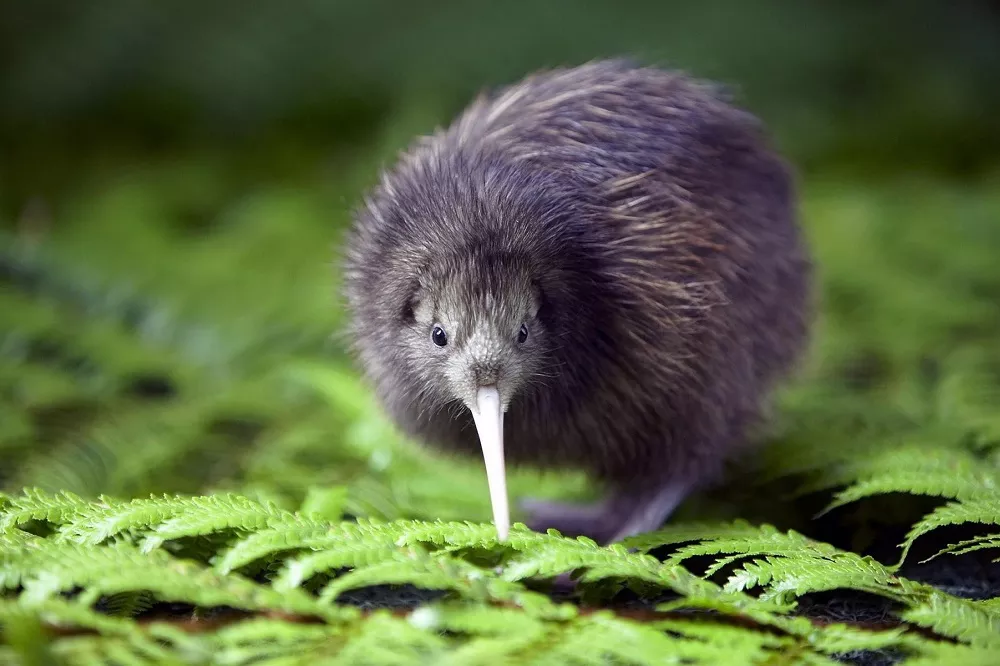The kiwi bird, a flightless and nocturnal creature, holds a special place in the avian world with its distinct appearance and fascinating characteristics. Native to New Zealand, this iconic bird has captured the attention and curiosity of people worldwide. In this article, we will delve into the physical features and peculiarities that make the kiwi bird a truly remarkable and enigmatic species.
Physical Features:
Size and Weight:
Kiwi birds are relatively small, with the size varying among the different species. On average, they measure between 40 and 65 centimeters (16 to 26 inches) in length, making them comparable to a domestic chicken. In terms of weight, kiwis are generally lightweight, with adult individuals typically ranging from 1.3 to 3.3 kilograms (2.9 to 7.3 pounds).
Body Shape and Structure:
One of the most distinctive characteristics of a kiwi bird is its peculiar body shape. They possess a rounded, plump body covered in soft feathers that resemble coarse hair more than traditional bird feathers. Their wings are small and virtually nonfunctional, rendering them flightless. Additionally, kiwis have stout, muscular legs that contribute to their ground-dwelling lifestyle.
Beak and Nostrils:
The kiwi’s beak is long, slender, and slightly curved, enabling it to probe the soil in search of insects, worms, and other invertebrates, which form the bulk of its diet. Unlike most birds, the nostrils of a kiwi bird are positioned at the tip of its beak rather than the base. This adaptation allows them to probe the ground while maintaining an acute sense of smell.
Feathers:
The feathers of a kiwi bird are highly unique. They lack the interlocking barbules typically found in most bird feathers, giving them a shaggy and hair-like appearance. These specialized feathers provide excellent insulation and help the kiwi retain body heat, which is crucial in their cold native habitats.
Coloration:
The coloration of kiwi birds varies among species. The most common species, the brown kiwi (Apteryx mantelli), displays predominantly brown plumage, often with streaks of lighter shades. The North Island brown kiwi (Apteryx mantelli) has a reddish-brown color, while the rowi (Apteryx rowi) exhibits a dark, almost black, plumage. The Okarito kiwi (Apteryx rowi) has a distinct combination of brown and white feathers.
Eyes:
Kiwis have small, beady eyes positioned on the sides of their heads. Their eyesight is not their primary sense, as they primarily rely on their excellent sense of smell and touch to navigate their surroundings in the dark.
Habitat:
The kiwi bird is found throughout New Zealand’s forests, grasslands, and shrublands, with different populations living on both the North and South Islands. Its natural habitat consists of dense undergrowth, where it can hide during the day and forage at night.
The bird’s nocturnal behavior is due to the fact that it has poor eyesight, and it relies mostly on its sense of smell to navigate through its surroundings. During the day, the kiwi bird seeks shelter in burrows or under thick vegetation, where it can rest and conserve energy until nightfall.
Behavior:
The kiwi bird is a solitary creature and does not form large flocks or colonies. It is generally a shy and elusive animal, preferring to avoid human contact whenever possible. However, it has been known to become quite aggressive when threatened, and it will use its sharp beak and strong legs to defend itself.
Despite its small size, the kiwi bird is an excellent swimmer, and it can cross rivers and other bodies of water with ease. It is also a fast runner, capable of reaching speeds of up to 12 miles per hour, which is impressive for a bird of its size.
One of the most interesting aspects of the kiwi bird’s behavior is its unique mating habits. The male and female birds will pair up and remain monogamous for several years, during which time they will produce one or two eggs per year. Interestingly, the males take on the majority of the parental duties, including incubating the eggs and caring for the chicks once they hatch.
Conclusion:
The kiwi bird’s physical features are a testament to its adaptation to a unique ecological niche. From their flightlessness and compact body structure to their specialized feathers and distinctive beak, kiwis have evolved to thrive in their forest habitats. Their captivating appearance and enigmatic characteristics have made them an enduring symbol of New Zealand’s biodiversity and a beloved icon worldwide.
As a culturally and ecologically significant species, kiwis continue to inspire conservation efforts aimed at preserving their populations and the habitats they depend upon. By understanding and appreciating the kiwi bird’s physical attributes, we can develop a deeper respect for the natural world and contribute to its long-term preservation.
Related topics:


 Facebook
Facebook  Instagram
Instagram  Youtube
Youtube 